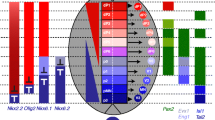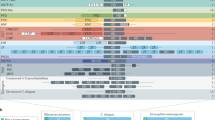Abstract
The homeodomain protein Fushi tarazu (Ftz) is required for several embryonic patterning processes including segmentation and neurogenesis. During the stages that these processes are regulated the protein is differentially phosphorylated, suggesting that phosphorylation plays a role in helping the protein to regulate different functions in different tissues. We showed in a recent study that one of the Ftz phosphorylation sites, a protein kinase A-type site in the N-terminal arm of the homeodomain, is required for normal Ftz-dependent segmentation. Here we test whether phosphorylation of this site (Thr-263) is also required in the developing central nervous system (CNS). A well-established role for Ftz in the CNS is for the differentiation of neurons referred to as RP2 neurons. Absence of Ftz expression in these cells causes a failure of certain target genes to be expressed and subsequent defects in RP2 differentiation. In contrast to its effect on segmentation, we find that mutation of Thr-263 to Ala (or Asp) has no effect on these CNS functions. This suggests that the phosphorylation state of this site is irrelevant for Ftz function in the CNS, and that there are tissue-specific differences in the requirements for Ftz phosphorylation.
Similar content being viewed by others
Author information
Authors and Affiliations
Additional information
Received: 28 February 1999 / Accepted: 10 March 1999
Rights and permissions
About this article
Cite this article
Dong, J., Krause, H. Tissue-specific requirements for a phosphorylation site in the Fushi tarazu homeodomain. Dev Gene Evol 209, 427–431 (1999). https://doi.org/10.1007/s004270050273
Issue Date:
DOI: https://doi.org/10.1007/s004270050273




